This analysis is part of the USC-Brookings Schaeffer Initiative for Health Policy, which is a partnership between Economic Studies at Brookings and the University of Southern California Schaeffer Center for Health Policy & Economics. The Initiative aims to inform the national health care debate with rigorous, evidence-based analysis leading to practical recommendations using the collaborative strengths of USC and Brookings. This post has been updated to reflect the final version of the bill that passed the House on March 13.
On the evening of March 13, 2020, the House of Representatives passed the Families First Coronavirus Response Act, focused on supporting the response to COVID-19, the disease caused by the novel coronavirus. The bill includes a variety of provisions that are intended to support families affected by the virus and associated economic disruption and to bolster our health care system’s ability to respond effectively. The White House supports the package, and the Senate is expected to send the legislation to the President for his signature in the coming days.
This analysis focuses on the bill’s provisions affecting health care coverage programs. In brief, the bill would offer financial support to state governments by temporarily increasing the share of Medicaid spending financed by the federal government, require almost all forms of health insurance to cover COVID-19 testing without cost-sharing, and create mechanisms to pay for COVID-19 testing for uninsured people. In our view, increasing the federal share of Medicaid would help mitigate the fiscal pressures on states created by both COVID-19 itself and any ensuing macroeconomic fallout. This can, in turn, reduce the risk that states make program cuts that might undermine COVID-19 response efforts or do harm to other state priorities. Removing financial barriers to COVID-19 testing is also a useful step that can help support the ongoing public health response. While Congress will almost certainly need to take further action related to health care coverage as the situation evolves, these provisions are worthwhile first steps.
The remainder of this piece discusses these provisions of the House bill in greater detail.
Increased Federal Medicaid Funding to Support State Governments
State governments are already incurring significant costs associated with the public health response to COVID-19, and as the number of people requiring treatment grows in the coming weeks, they will bear additional costs through their Medicaid programs. Additionally, if the COVID-19 situation spurs a broader economic downturn, as now seems possible, state governments will face fiscal pressure from lower revenues and higher enrollment in Medicaid and other programs.
Because states generally must balance their budgets, states will need to take steps to close these shortfalls. In recent economic downturns, most of the fiscal adjustment has occurred through spending cuts, rather than revenue increases. If that is the case this time, that could make it difficult for states to devote adequate resources to the ongoing public health response, lead states to cut their Medicaid programs, or lead states to make cuts in other program areas, like education or public safety. Since there is little reason to believe that the value of any of these activities has fallen (and the situation with COVID-19 has likely increased value of state spending on health programs), such responses would be undesirable. Moreover, any adjustments states do make, whether on the revenue or spending sides of their budgets, would likely exacerbate an economic downturn by reducing aggregate demand.
The House-passed legislation would seek to prevent these types of damaging state actions by increasing the share of Medicaid program costs borne by the federal government. Specifically, the House package would increase the federal matching rate that applies to most Medicaid populations by 6.2 percentage points as long as a federal public health emergency declaration remains in effect. (Under current law, that federal share varies across states, but currently ranges from as low as 50 percent to as high as 78 percent.) On an annual basis, that increase translates into roughly $40 billion in funding for state governments.[1] [Editor’s note: a prior version of this post noted that, as originally proposed, the bill included an 8 percentage point increase, translating to roughly $50 billion in funding.]
This funding may be enough to keep states from facing large budget shortfalls in the near-term, but Congress may need to provide additional support to states as the situation evolves in the coming weeks and months. Ideally, Congress would take this opportunity to make the Medicaid program a more effective automatic stabilizer on an ongoing basis by providing for increases in the federal share of Medicaid (and Children’s Health Insurance Program) costs whenever a state’s unemployment rate exceeds a threshold level. One of us (with Jason Furman and Wilson Powell) has put forward a proposal for doing that, and the Government Accountability Office has put forward a related proposal. This approach would offer insurance against the possibility that the disruptions caused by COVID-19 will spur a deep and protracted economic downturn.
In future legislation, Congress should also consider expanding the temporary increase in the matching rate to state spending on people in the Affordable Care Act Medicaid expansion population as an inducement to states to adopt expansion. While the bill’s efforts to ensure that COVID-19 testing is financially accessible to uninsured people (discussed below) are worthwhile, connecting these people to comprehensive medical coverage would likely be more effective in supporting the ongoing public health response, particularly because it would ensure that they can access treatment for COVID-19 when appropriate. Medicaid expansion would also, of course, have broader (and well-documented) benefits for access to care, financial security, and health outcomes.
Health Insurance Coverage – Without Cost-Sharing – for COVID-19 Testing Services
The legislation would guarantee that all forms of health insurance will cover COVID-19 testing and related services without cost-sharing. Testing is critical to ongoing efforts by public health authorities to gauge the scope of the epidemic and respond appropriately, but financial barriers could deter people from getting tested.[2] This can include the cost of the test itself, as well as costs associated with the visit to a physician’s office, urgent care facility, or emergency room. These concerns may be particularly acute for people facing relatively large deductibles, especially because laboratory and emergency services are likely to be subject to the deductible in most health plans.
To address this issue, the legislation requires that all forms of health insurance cover both: (1) any laboratory test used to diagnose COVID-19 that is approved by the FDA; and (2) costs associated with administration of the test. Further, coverage must be made available without cost-sharing and without requiring prior authorization from a health insurance plan. In recent days, some individual insurers have implemented corresponding changes to their insured benefits , but these legislative changes will help ensure that this happens in all private coverage—and ensure that federal coverage programs meet a similar standard.
The bill accomplishes this by applying these requirements to any “group health plan” and any “health insurance issuer offering group or individual health insurance coverage.” This includes all forms of employer-based coverage (from a large or small employer, and whether offered through an insurance company, association, or on a self-insured basis) and all individual market insurance. The bill would apply similar standards to Medicare (including both traditional Medicare and Medicare Advantage plans) and would require states to cover these services in their Medicaid programs. The legislation would also apply these requirements to coverage for active-duty members of the military, veterans, and federal employees – ensuring comprehensive application across all forms of major medical coverage.
Testing for People Without Health Insurance
Eliminating financial barriers to testing for people with health insurance is an important step, but financial barriers would remain for the roughly 30 million people who are uninsured, as well as for the much smaller number of people with short-term limited duration coverage, which is not subject to these (and many other) requirements, but has expanded following Trump Administration rule changes.
To address this population, the legislation takes a pair of approaches. First, the bill would allow state Medicaid programs to cover COVID-19 testing and associated professional services for people without coverage through an employer, the individual market, or a federal coverage program like Medicare or Medicaid. Under the bill, the federal government would cover the full amount of any costs states incurred for these purposes.
Second, the legislation would allow the federal government to cover testing and related services directly for people in states that did not cover these services through Medicaid. The legislation specifies that payment should occur through the National Disaster Medical System (NDMS), an existing federal program that arranges for medical services for people affected by natural disasters, but the details of how the NDMS infrastructure would be used are not specified and would need to be worked out by the administration.
The legislation specifies that the NDMS-based program would pay for services at the NDMS’ usual reimbursement rates, generally either 100 percent or 110 percent of Medicare rates, and appropriates $1 billion for this purpose. Exactly how far these funds would go in practice is uncertain, most importantly because it is unknown how many states will take up the Medicaid pathway. But particularly in light of current limits on testing capacity, the appropriated funds would almost surely be sufficient to accommodate all near-term claims on the program. [Editor’s note: a prior version of this post noted that, as originally proposed, the bill would have paid providers 100 percent of Medicare rates in all cases.]
[1] The most recent Medicaid Actuarial Report projected that total state and federal spending on Medicaid benefits would be $710 billion in fiscal year 2021. Adjusting that figure to exclude spending on people eligible for Medicaid under the Affordable Care Act reduces that amount to $620 billion, which implies that an 6.2 percentage point increase in the federal matching rate would increase federal payments to states by $38 billion if in effect for the full year. A similar calculation for fiscal year 2020 leads to an estimate of $37 billion.
[2] It is worth noting that there is little rationale for imposing these types of financial barriers. The purpose of cost-sharing is to deter people from seeking low-value services. But the risk of overuse is limited when access to testing is being tightly rationed based on clinical criteria, as it is right now. Even if capacity constraints ceased to bind, there is real reason to doubt that cost-sharing would primarily deter low-value testing in light of evidence that cost-sharing often causes people to forgo appropriate care and the fact that, in this instance, testing generates social benefits that individuals may not fully internalize. Requiring cost-sharing does, however, burden people who have the misfortune to need these services.
The Brookings Institution is committed to quality, independence, and impact.
We are supported by a diverse array of funders. In line with our values and policies, each Brookings publication represents the sole views of its author(s).
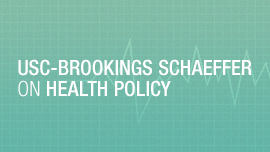



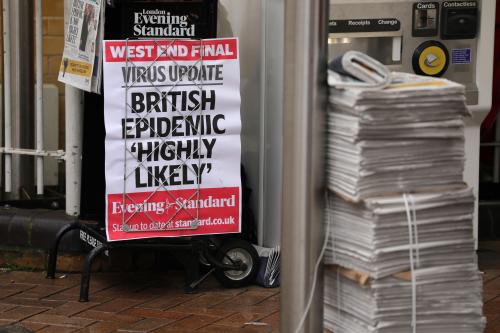
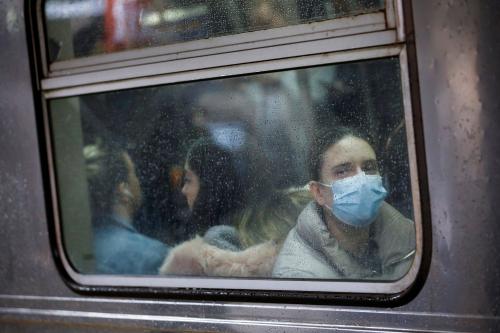



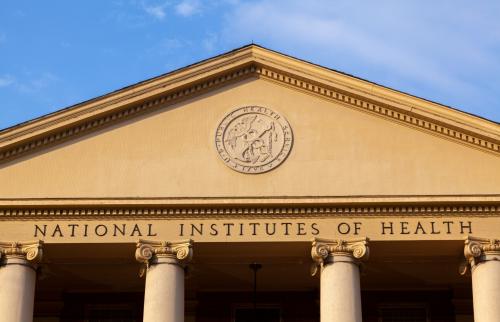
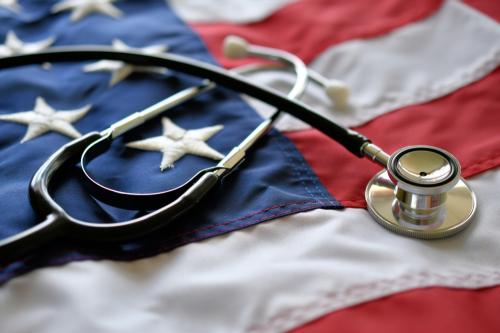
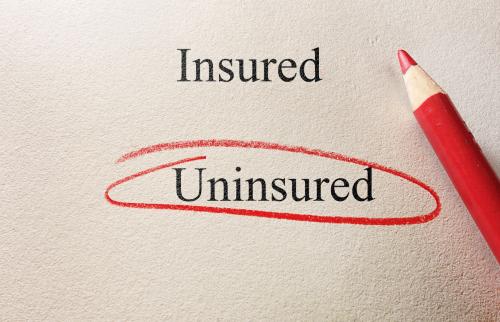
Commentary
What are the health coverage provisions in the House coronavirus bill?
March 13, 2020